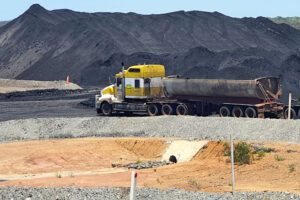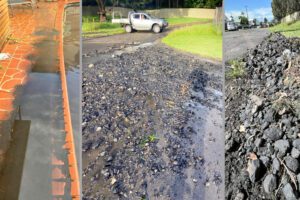A new study of a Scottish sea loch which reconstructs 5,000 years of its climate history is casting doubt on hopes that ‘blue carbon’ could help slow the rate of global heating.
‘Blue carbon’ is the term used to describe atmospheric carbon which has been captured by underwater vegetation and stored under the sea bed. This natural process, which speeds up when higher carbon dioxide concentrations help the plants’ metabolism, is widely viewed as one of the planet’s natural lines of defence against climate change.
However, in new research published in the journal Global Change Biology, a University of Glasgow-led research team suggest the history of Loch Sween shows that the process of capturing blue carbon could be more complicated, and less predictable, than previously thought.
However, their findings also point to how coastal ecosystems could be managed to maximise their potential for carbon sequestration in the future.
Their research is the first attempt to reconstruct how climate and land-use changes have impacted blue carbon storage by a coastal ecosystem over such a lengthy timescale.
To turn the clock back five millennia on Loch Sween’s history of blue carbon, the researchers team began by coring into the loch’s coralline algae bed – created by marine plants which trap carbon dioxide from the atmosphere and store it under layers of sediment on the sea bed.
Each layer provides an invaluable snapshot of information about the atmosphere of the time it was created, preserving them for thousands of years as blue carbon.
READ RELATED
Removing cores, each around 80 cm in length, from the bed at three locations along the loch’s coastline allowed the researchers to use sophisticated carbon dating techniques at the Scottish Universities Environmental Research Centre in East Kilbride to reconstruct the atmospheric history of Loch Sween.
Dr Nick Kamenos, of the University of Glasgow’s School of Geographical and Earth Sciences, is the paper’s senior author. He said: “We know that anthropogenic climate change is going to continue to have serious effects all around the world in the coming decades. One of the most effective ways we can predict what might happen in the future is by looking at how ecosystems have reacted to temperature changes in the past, and to date there’s not been a lot of investigation of the history of blue carbon over these types of timescales”.
“We chose to study Loch Sween in particular because, thanks to historic records, we have access to several hundred years of information about how humans lived there, as well as temperature records, which we could cross-reference with our carbon-dating data”.
The team’s key finding is that the ability of sea vegetation to capture and store carbon relies more heavily on the climatically-driven stability of their ecosystems than previously thought. While their reconstructed timeline does show that the amount of blue carbon produced during warmer periods does increase as vegetation’s metabolisms ramp up, sudden changes in temperature produced much more unpredictable results, sometimes reducing carbon deposition dramatically .
Further, human activity such as farming also affected the uptake of blue carbon – the runoff from historic farming, which adds organic material to the seas, increased the amount of carbon released back into the loch.
Dr Heidi Burdett of Heriot-Watt University is a co-author on the paper. She added: “It means we can see clearly, for example, how sudden changes in land use like the Highland clearances affected the area – runoff from human settlements and their farms around Loch Sween was deposited as organic material on the sea bed until 1848, when the clearances meant a rewilding of the farmed land.”
“While our paper suggests that blue carbon isn’t going to be quite as straightforwardly beneficial to our efforts to slow climate change as some have hoped, it does also highlight how important a role that human land use plays in our coastlines’ ability to capture carbon.
“That’s information that might be valuable to ecologists and land managers in the future in their efforts to maximise the effectiveness of blue carbon. We’re keen to continue our blue carbon research in the future, and we’ll soon be looking at similar systems elsewhere around the Atlantic, which have coastlines resembling Scotland’s in a number of ways.”
The team’s paper, titled ‘Carbon burial over the last four millennia is regulated by both climatic and land use change’, is published in Global Change Biology. The research was funded in part by the Natural Environmental Research Council (NERC).
Read more Mining Safety News














Add Comment